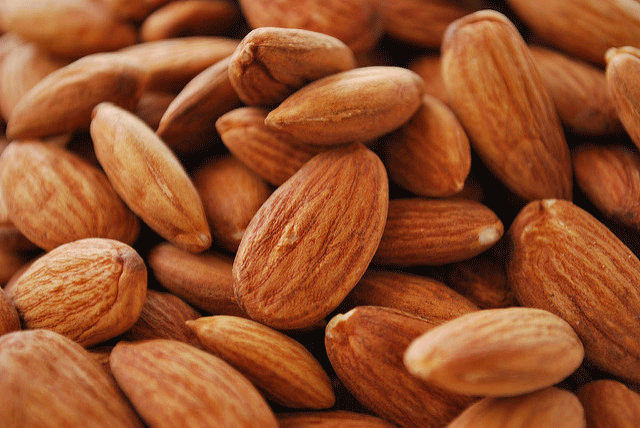Nutritionally speaking, almonds (Prunus dulcis) are one of nature’s superfoods, loaded with vitamin E and antioxidants and linked to lowering LDL cholesterol and the risk of heart disease. Combine that with the fact that 80% of the world’s almond supply comes from California, and you’ve got plenty of reasons to find room for an almond tree in your garden. California’s hot, dry summers are ideal for these trees, which are native to Asia Minor and North Africa, but they also need some winter chill to be productive. Almond trees are great additions to the landscape as well. My niece was married a couple years ago in an old almond orchard in Ripon, and a lovelier setting I cannot imagine.
When to Plant
Bare-root trees are available in nurseries starting in winter and continuing through early spring. Plant while the tree is still dormant (before leaves begin to emerge) to give it the best chance to get established.
Where to Plant
Almonds are best suited for Zones 5–9. They are hardy to 10°F, but require 250 to 500 chill hours. Plant in full sun in well-drained soil. Standard-sized trees are beautiful as a focal point in the landscape. Dwarf trees can be planted in large containers.
How to Plant
Plant in a hole twice as wide but no deeper than the rootball. Make sure soil does not cover the graft union (where the shoot and root stem/rootstock meet). Take care that roots do not dry out before planting, and water well once planted. Once it’s in the ground, prune off the top third of the tree; this will encourage better root formation and a healthier tree structure.
Most standard trees require a second tree of a compatible variety for cross-pollination. If space is tight, you can plant two different varieties of standard trees in the same hole (18 to 24 inches apart) or plant a dwarf variety nearby in order to cross pollinate.
Care and Maintenance
Mulch each year with compost. Almonds require moderate water but are fairly drought-resistant once established. During dry summers they will require occasional deep watering. During the first three to five years, prune to an open center to allow better sun exposure and improved air circulation. Nuts grow on short wood spurs that produce for about five years. Once the tree is well established, prune each year to remove dead wood and 20% of the old wood to encourage the growth of new spurs and keep the tree productive. You may need to cover the tree with a tight net to protect your harvest from birds and squirrels.
Harvesting
Nuts are ready for harvest in late summer or early fall when the outer hulls split open and the inner shells are partially dry. Shake the nuts from the tree and spread out in the sun in a single layer to dry in their hulls for one day. Remove the hulls and dry in the shell for one more week. Nuts are sufficiently dry when they rattle inside the shells when shaken. Store nuts in a cool, dry place or freeze them for longer-term storage. A mature standard tree yields 20 to 25 pounds of nuts per year.
Additional Information
Almonds bloom in early spring with white or light pink blossoms. Frosts occurring during or soon after bloom time can reduce the yield. If your area is prone to early spring frosts, choose a later-blooming variety, such as ‘Butte’, ‘Mission’, or ‘Titan’.
Recommended dwarf varieties include ‘Garden Prince’ and ‘All-in-One’ (semidwarf). For standard trees consider the following varieties: ‘Butte’ (pollinate with ‘All-in-One’, ‘Nonpareil’, or ‘Mission’); ‘Mission’ (pollinate with ‘Nonpareil’ or ‘Hall’s Hardy’); ‘Ne Plus Ultra’ or ‘Nonpareil’ (pollinate each other); or ‘Titan’ (pollinate with ‘Hall’s Hardy’ or any peach (a close relative to the almond) blooming at the same time).


